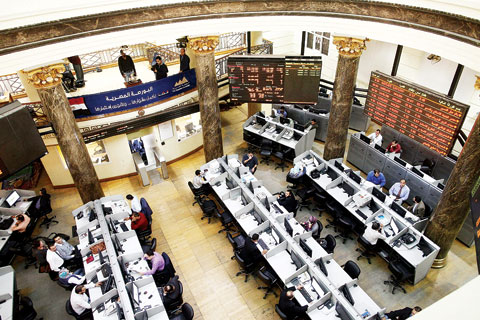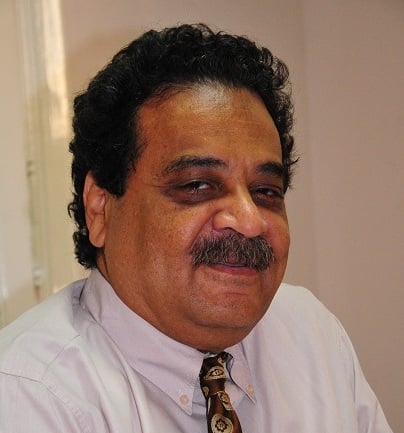
By Sara Khorshid
At least for a while it will be difficult for many Egyptian youths to forget the scene of 19-year-old engineering student Mohamed Reda taking his last breath. Reda was killed inside Cairo University’s campus as he got hit in the neck by birdshot while the police was dispersing a protest by students. Rida had no political affiliation and he attended his classes regularly, refraining from taking part in the strike held by students opposed to the ouster of former president Mohamed Morsi.
The circumstances that surround Reda’s death are reminiscent of a number of key incidents that triggered the wrath of Egypt’s youth and led them to change the course of events over the past three years: the beating to death of 28-year Khaled Said at the hands of two policemen in 2010, which made him an icon of the 25 January protests; the killing of a medical student during the December 2011 protests against the then-ruling military council; then the killing of several youth during Morsi’s reign, such as Jika of the April 6 Movement, whose death constituted a milestone in the opposition to Morsi’s rule.
But the case now is different: unlike Mubarak and Morsi, Egypt’s defense minister and de facto ruler General Abdel Fattah Al-Sisi has enjoyed manic-like popularity among wide segments of Egyptians since he intervened to oust Morsi amid 30 June’s historic protests. Sisi’s supporters include a segment of upper-middle class Egyptians who are so fed up with protests that disturb their routines that they have been cheering for the authorities’ brutal measures in silencing dissidence. They openly criticise “those who support human rights” for “giving terrorists the chance to flourish.” But against this stratum’s wish that stability prevail, protests have escalated, more so in response to controversial steps taken by the regime, from the bloody dispersal of the Rabaa Adaweya sit-in to the new protest law issued by the military-backed government.
But as time passes for an Egypt that is still politically turbulent and economically weak, more Egyptians, including those amongst the pro-30 June camp, have started to question the current rulers’ ability to run the country.
While non-revolutionary Egyptians are becoming more critical of the regime’s inability to bring them stability, revolutionaries – including those who took part in the 30 June protests – continue to oppose the non-democratic features of the state that they opposed under Mubarak and Morsi, especially considering that such characteristics have been reinforced by the draft constitution written by a committee appointed by the military. Words like “democratic roadmap” and “transition to democracy” have been reduced to empty clichés in light of constitutional clauses allowing military trials for civilians, protecting the army’s budget against public accountability, and stripping the elected president of the powers to appoint a defence minister without the defence ministry’s approval.
Time seems ripe for the crystallisation of a stronger opposition movement against the military’s powers that render it a state within a state. However divisions amongst anti-regime forces have so far prevented a unified rebellion from materialising; since 30 June, followers of the Muslim Brotherhood have accused revolutionaries of supporting what they insist is a “military coup.” Revolutionaries on the other side accuse the secretive organisation of being as authoritarian as the military and for seeking power and political gains rather than real democracy.
This rift between the regime’s opponents has bought the regime some time but has failed to protect it against rising dissidence or to calm the continued turbulence on the streets.
In the meantime, unemployment and poverty rates continue to rise. Official statistics recently revealed that 26% of the population lives in poverty. National unemployment has reached 13.4% of the workforce. The most marginalised stratum continue to be hit hard by their rulers’ negligence: On 18 November, 26 Egyptians were killed in a train accident reminding many that nothing has changed much from Mubarak’s era wherein roads and public railways killed scores as a result of poor maintenance. A year earlier, under Morsi, 56 children were killed when a train crashed into their school bus. Similar accidents killed many more under Mubarak.
The vast majority of Egyptians that struggle to make ends meet are not expected to keep silent forever. Already workers in numerous factories across the country have been staging strikes.
Most importantly, Egyptian youth, who are considered to be the main catalyst for the 25 January uprising, are increasingly angry at the ruling regime over the undemocratic measures it has adopted and its continued crackdown on their fellow youth.
Youth should take the lead and save the country from the classic Brotherhood-vs.-army conflict that goes back to Nasser’s era, and the equally outdated debate between old-generation secularists and Islamists, a debate that has only dragged the revolution away from its well-known goals – “bread, freedom, social justice and human dignity.” Only youth with fresh minds can stop the dominance of power politics and ideological fanaticism and restore the revolution to its initial path.
Since 3 July, a considerable segment of revolutionaries have been reluctant to take to the streets because they fear that their rebellion could get “hijacked” by the Brotherhood who are widely believed to be deliberately stirring up more tensions ahead of the upcoming constitutional referendum in order to prevent a new vote from overriding Morsi’s election-driven “legitimacy”.
Although the youth’s concern is valid, it must not deter them from standing up to the regime’s continuous atrocities. Just as they vocally opposed violations committed during Morsi’s reign, ignoring the then-obvious intention by Mubarak’s supporters to exploit youth activism in the old regime’s favor, revolutionaries must continue to defend the revolution’s values by not letting their fear of the Brotherhood play in favor of the old regime’s interests. In order to achieve this, youth must take the lead and encourage a youth leadership to emerge from their midst.
But as they penetrate politics and drive the dynamics of the country, they need to preserve their innocence. It is this innocence that perhaps dominated Tahrir’s 18 days,that have turned the country upside down and resulted in the quagmire that is Egypt now.
The youth are responsible to win the masses to the side of the revolution once again, get back to work, and to finish the business that they started. Mature experience is needed but it might as well get derived from the input of pro-January 25 Egyptians from among the youth who played an integral part in the revolution rather than the older generation who have lived through decades and decades of dictatorship, and who, paradoxically, continue to dominate Egypt’s political scene until today.
Hope in the youth’s drive can still be found, as demonstrated by words written in late November on the Facebook page of a 19-year-old Egyptian girl who took part in the events of both 25 January and 30 June : “Today after the security forces fired tear gas and birdshot inside my university’s campus and toward the students who were trapped behind the closed main entrance, which led to the death of our colleague Mohamed Reda, I declare my support to my striking colleagues till justice is served. Down with your state if our freedom is absent.”
Sara Khorshid is an Egyptian journalist and writer who has written on Egypt, the region, and Muslim-Western relations for the past 11 years. Her articles appeared in the New York Times, The Guardian, Al Shorouk Egyptian daily, Jadaliyya, Aljazeera.net, Alarabiya.net and numerous other media outlets.



